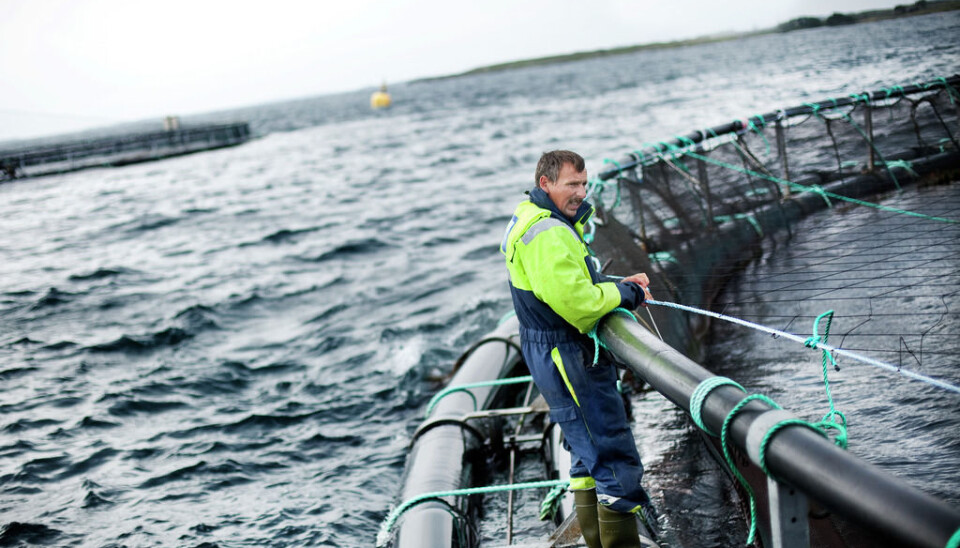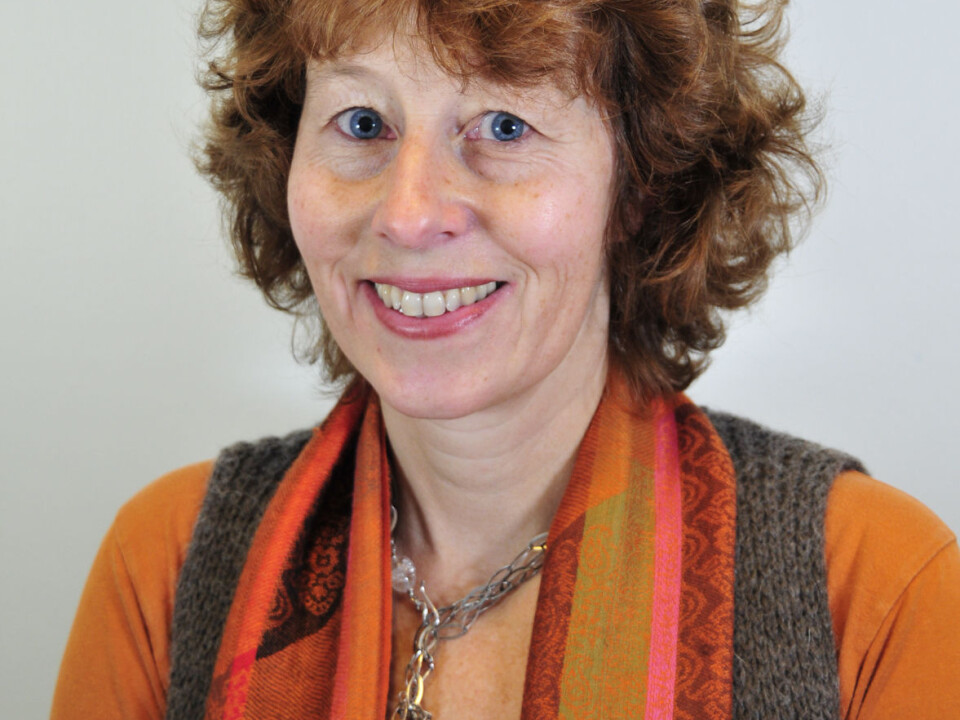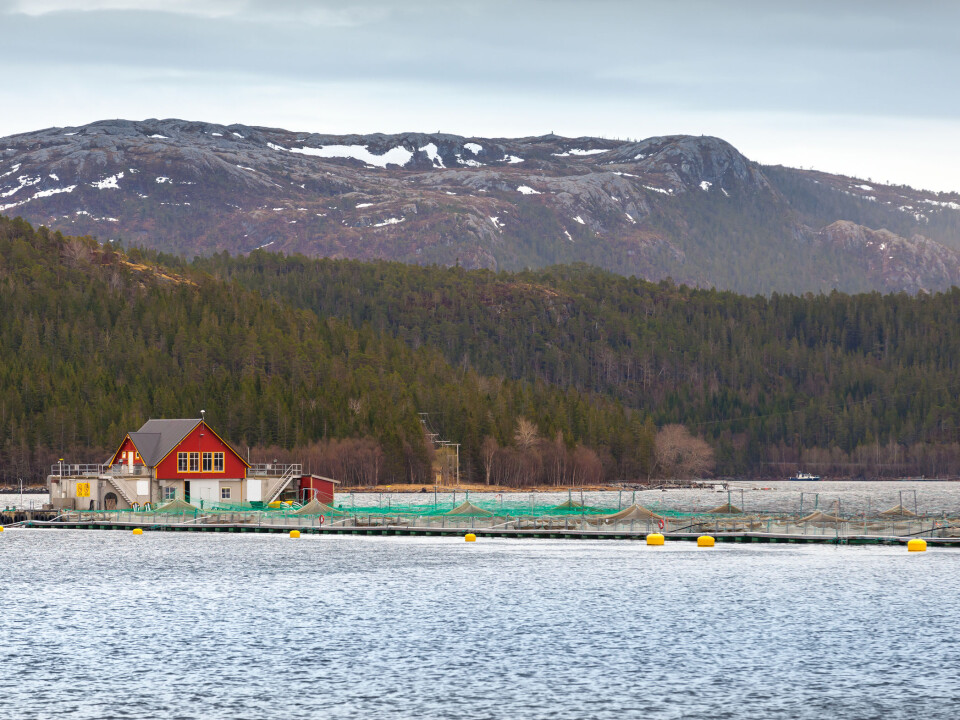An article from University of Oslo

Salmon - Norway's most important livestock
Over the course of just a few years, salmon farming has become one of Norway's most important industries. Yet we know little about the salmon. New research raises the fish to its rightful place as one of Norway’s most important livestock.
Denne artikkelen er over ti år gammel og kan inneholde utdatert informasjon.
- We produce more than 15 million meals of salmon per day in Norway. Farmed salmon is Norway's most profitable food industry and among the few examples of Norwegian food production that does not receive subsidies. It is difficult, however, to find a food that is more contentious, says Marianne Lien.
She is a professor of social anthropology at the University of Oslo and author of the book "Becoming salmon. Aquaculture and the domestication of a fish". She has researched salmon aquaculture for many years, first on fieldwork in Tasmania, and Later in Norway in collaboration with Professor John Law, at the Open University
Little knowledge
For four years Marianne Lien and John Law have conducted fieldwork at various farms to learn more about our important livestock. Lien believes that more people should take an interest in this industry, which many have expressed an opinion on but few have studied closely.
- Fieldwork provides unique insight into the daily operations of the aquaculture industry and makes it possible to spot challenges and dilemmas. You will hardly find a Norwegian who hasn’t visited a farm and seen first-hand how cows, pigs and sheep live. Far fewer have set foot on a fish farm, says Lien.

How do farmed salmon influence the boundaries between fish and animals, between wild and tame, and between local and global production systems? These are questions the author discusses in "Becoming salmon". She describes fish-farming or aquaculture as a continuous experiment at the intersection of alternating and conflicting interests.
- We have allowed special interest groups, each entrenched in their own points of view, to dominate the discussion. And the debate has become very polarized.
ien hopes that her research will contribute to a more nuanced debate and bring new knowledge about the industry. But above all she is interested in finding out what happens when fish become farm animals (domestication).
- Previous studies of domestication have often focused on what happened thousands of years ago and are based on potsherds and bones. The aquaculture revolution, as we have witnessed over the last 50 years, gives us a unique opportunity to follow a similar process while it is actually happening.
A five-fold increase in production? Move farms onto land?

- We are facing serious political challenges and decisions in terms of both wild and domesticated salmon: To what extent should we protect wild salmon? And how much more can the fish farms expand - and on what terms? The decisions that need to be taken require an informed community, says Lien, who believes we face substantial challenges with regard to the future direction of aquaculture.
- While some argue for a five-fold increase in production, others want to move all production onto land in enclosed tanks.
We must ask ourselves whether we can sustain more growth.
The good life for salmon
While Lien has been doing her fieldwork fish have legally become "animals", according to Norwegian law, with the same rights to protection as other domesticated animals. Salmon now have the same rights as pigs and cows. The practical implications are huge. Salmon slaughterhouses are now built so that the salmon is electrically stunned before it is killed. Everyone working in aquaculture is now required to take courses in animal welfare. It is now legitimate to talk about salmon welfare.
- As an observer on a welfare course I noticed that aquaculture employees showed a surprising ingenuity and care for the salmon at different stages in its life. And it became clear to me how those who work closely with salmon see opportunities for improvement, which previously would not have been noticed, or considered.
- How would you describe the conditions for the salmon in the floating cages?
- It is difficult to know how an individual domestic salmon experiences its life, but workers at the fish farms keep a close eye on how the salmon are doing in each cage and in each tank. We can hardly argue that domestic salmon would want to be wild. What we do know is that it gets all the food it needs and that it never goes hungry, says Lien.
Struggle for existence
The conditions for wild salmon are the opposite; a struggle for existence, where very few individuals survive. It has poor odds from when it is a fry, and must fight for food from the river to the sea and back again, says Lien.
Within the aquaculture industry and in the news one constantly hears reports of escaped farmed salmon, without thinking to question it. And neither did Marianne Lien at the beginning of the research project.
- But finally, one day, I began to ask myself: Why do we say "escaped"? Salmon do not actually break out of captivity. They go astray because the netting of the cages is destroyed by storms, a propeller, or something else. In other words the fish do nothing actively to break out. Instead of escaped salmon, we could perhaps talk about homeless or lost salmon, she says.
Still an experiment
There are, according to Lien, many misconceptions about salmon farming - the widespread use of antibiotics in aquaculture, for example.
- Antibiotics are no longer an issue in salmon farming, thanks to vaccines. Among other more pressing questions are sea-lice, which get a lot of attention, and - not least - the use of resources from a global perspective. How much can we allow ourselves to deplete marine resources in other countries to feed Norway’s salmon? How can we make the salmon industry as sustainable as possible? These are questions we must answer, says Lien.
She stresses that aquaculture is a new industry.
- We do not know enough about how aquaculture impacts the environment. Salmon farming is still a big experiment, she emphasizes.
Salmon's advantage
Marianne Lien envisages that there will come a time when we need to decide which animals we should prioritize for food production.
- We may have to decide which animals - on land or in water - it's worth fattening up, given limited resources.
Shall we go for chicken, pigs, cattle, or salmon? she asks rhetorically. Lien stresses that salmon utilize feed more efficiently than most four-legged animals, partly because they use less energy to keep themselves "upright."
- In a country like Norway with so many fjords, the conditions are very favorable for salmon farming. Salmon teach us every day something new about livestock in water. In the future, our diet may be based on marine life forms such as carp, seaweed or even plankton. We are only at the beginning of the exploration of marine domestication in food production, says Marianne Lien.






























